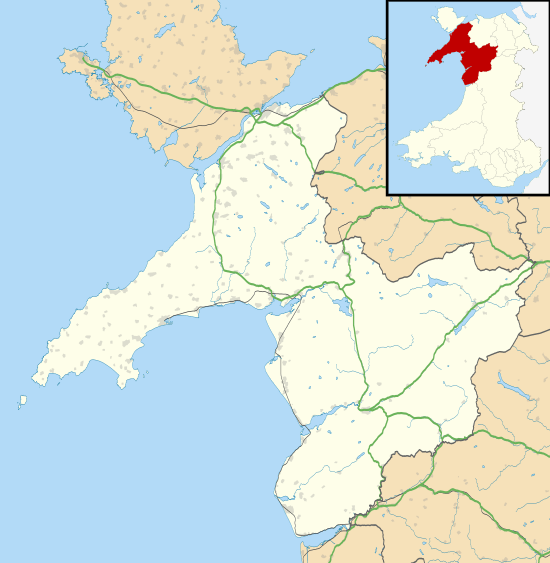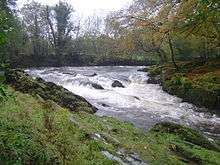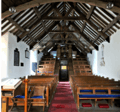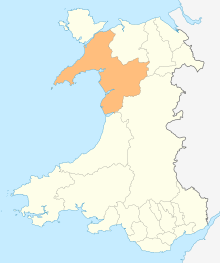Mallwyd
Mallwyd (![]()
| Mallwyd | |
|---|---|
Mallwyd village | |
 Mallwyd Location within Gwynedd | |
| OS grid reference | SH862125 |
| Community | |
| Principal area | |
| Country | Wales |
| Sovereign state | United Kingdom |
| Post town | MACHYNLLETH |
| Postcode district | SY20 |
| Dialling code | 01650 |
| Police | North Wales |
| Fire | North Wales |
| Ambulance | Welsh |
| UK Parliament | |
| Senedd Cymru – Welsh Parliament |
|

History
The village is situated near the boundary between the historic counties of Merionethshire and Montgomeryshire. The village is situated in the parish of Mallwyd in the district of Mawddwy. This was the region of the Red Bandits of Mawddwy, which is remembered in the village pub, The Brigands.
Railway
In 1867, the Mawddwy Railway was opened, connecting Dinas Mawddwy with Cemmaes Road. A small station was provided to serve Mallwyd, though it was nearly a mile from the village. Passenger services on the railway were withdrawn in 1931, and the railway closed and was lifted in 1952.[1]
The Church
 The church viewed from the East
The church viewed from the East- Yew tree
- Church portals
- Ports and timber belltower
- The timber belltower
 A panorama view of the church facing East
A panorama view of the church facing East Raised seating at the back of the church
Raised seating at the back of the church
- The font
- Sculpture of Mary and Jesus
According to tradition, Mallwyd church was founded in the 6th century by Saint Tydecho after he came to the area from Cornwall. The present building dates from the 14th century and is unusual in form, being long and narrow with a balcony at each end. There are many wooden fixtures dating from the 17th century. The scholar John Davies was rector of Mallwyd for 40 years at the beginning of the 17th century. There is a memorial to him in the church which was put up to commemorate the 200th anniversary of his death. Outside the church are several great yew trees.
The timber bell tower of the church is inscribed: SOLI DEO SACRUM ANNI CHRISTI MDCXL. It formerly also read VENITE CANTEM[us domino] A.D.1640 HONOR DEO IN EXCELSIS. The portals of the church, found between the church and the river, are decorated with fossil mammal bones.[2] The black marble, octagonal font, dated below the bowl 1734, was a gift of Sir John Mytton of Dinas Mawddwy
Notable people
- John Davies — scholar, Rector of Mallwyd 1604-44 (c. 1567–1644)
- Robert Foulkes, clergyman and murderer (baptised here March 1633/34-executed January 1679)[3]
- John Rice Jones — American jurist and politician (1759–1824)
References
- Johnson, Peter (June 2013). The Cambrian Railways: A New History. Crecy Publishing. ISBN 0860936449.
- "ST TYDECHO'S CHURCH, MALLWYD". Coflein. 4 July 2012. Retrieved 30 December 2017.
- Klein, Peter (2005). The Temptation and Downfall of the Vicar of Stanton Lacy. Merlin Unwin Books. pp. 27–28. ISBN 1-873674-71-6.
External links
| Wikimedia Commons has media related to Mallwyd. |
